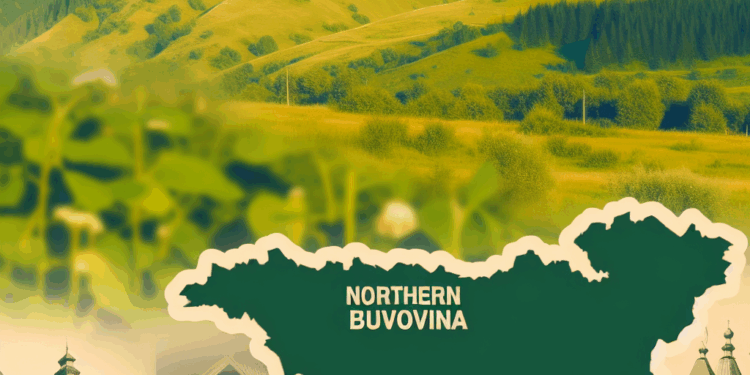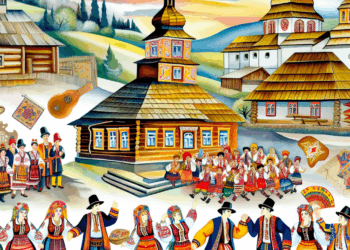Introduction
Bukovyna is a historical and geographical region located in the north-west of Ukraine and north-east of Romania. During its long history, this region has repeatedly changed its borders and political affiliation, being under the rule of different states and empires. The 20th century was a special one for this region, marked by significant territorial changes and annexations. This article examines the key events surrounding the changing borders of Bukovina, from 1775, when the territory became part of the Austrian Empire, to the modern borders.
Bukovina under the control of the Austrian Empire (1775)
In 1775, the Austrian Empire annexed Bukovina, previously under Ottoman rule. This event was the result of the War of the Austrian Succession and the subsequent policy of the Austrian monarchs to expand the borders of their power. After the annexation, Bukovina became part of the Habsburg monarchy, which had a significant impact on the cultural and economic development of the region.
By the end of the 18th century, Bukovina had a multi-ethnic population consisting of Ukrainians, Romanians, Germans, Jewish and Polish communities. This diversity created a unique cultural environment that lasted until the beginning of the 20th century.
Annexation to Romania (1918)
After the end of World War I and the dissolution of Austria-Hungary, Bukovina was annexed to Romania in 1918. This event was approved by the Great National Assembly held in Chernivtsi on 28 November 1918, where delegates declared the unity of the Romanian lands. The annexation provoked mixed reactions among the local population, which consisted of both Romanians and Ukrainians, as well as representatives of other ethnic groups.
During the period of Romanian rule (1918-1940), Bukovyna experienced significant changes in the social, economic and educational spheres. The Romanian nationalist government pursued a policy of “Romanisation” aimed at strengthening Romanian identity and culture in the region. However, such measures also led to a deterioration of relations with the Ukrainian population and other minorities.
Establishment of Soviet power (1940)
In 1940, in the crisis caused by World War II and the Soviet Union’s intervention in Romania, Bukovina was annexed by the USSR. This followed the signing of the Moscow ultimatum, which forced Romania to hand over its northern territories, including Bukovina.
Under Soviet rule, there was a radical restructuring of the social structure: land confiscation, collectivisation, and a change in the educational system. Bukovyna became part of the Ukrainian SSR, which also meant increased Russification of the region. The local population again faced changes that affected both economic and cultural life. One of the key moments of this period was the creation of a new administrative division and the introduction of Soviet ideology locally.
Impact of the Second World War
During the Second World War, Bukovina once again found itself at the centre of geopolitical games. The territory was first occupied by Nazi troops, then returned to Soviet control in 1944. This transition changed the political and social structure of Bukovina once again, as many inhabitants were forced to leave their homes either as a result of repression or because of the presence of fundamental changes in the borders.
After the war, mass resettlements and ethnic cleansing took place, aimed at relocating the Ukrainian population to liberated areas and minimising the influence of the Romanian population. These processes had long-term consequences for the demography of the region and its cultural identity.
Current borders
After the collapse of the Soviet Union in 1991, Bukovina found itself divided between Ukraine and Romania. The modern border runs along the Prut River and separates the Chernivtsi Oblast of Ukraine, which included the eastern part of Bukovina, from the historical Romanian lands. This partition has caused new unrest and disputes over national identity, especially among the local population, which retains ties to both countries.
Today Chernivtsi, the administrative centre of Chernivtsi Oblast, is an important cultural and educational centre. The region’s multi-ethnic population maintains its traditions and cultural diversity while celebrating both Ukrainian and Romanian holidays and customs.
Conclusion
The history of Bukovina throughout the 20th century illustrates a complex process of identity and border formation at the historical, political and cultural levels. Constant changes in the status of the region, annexations and border changes carried out by different powers left an indelible mark on both cultural and social spheres of life.
The uncertainty about the identity and status of Bukovina continues to exist today, which adds new dimensions to the discussions about the future of this unique region, where traditions and cultures of the two countries are intertwined.








